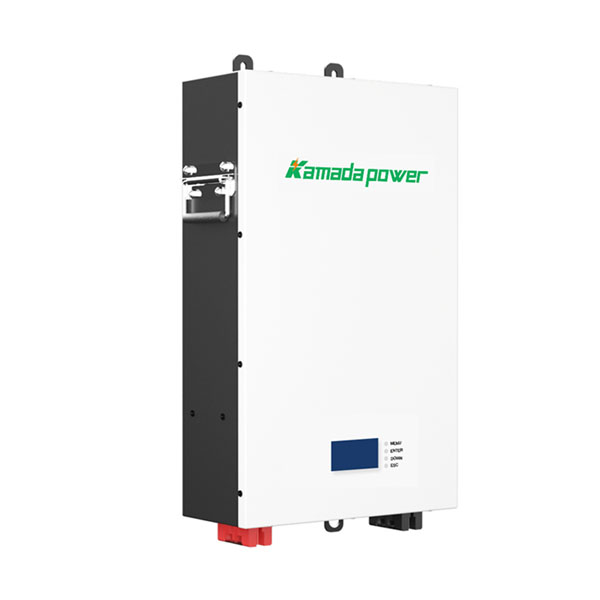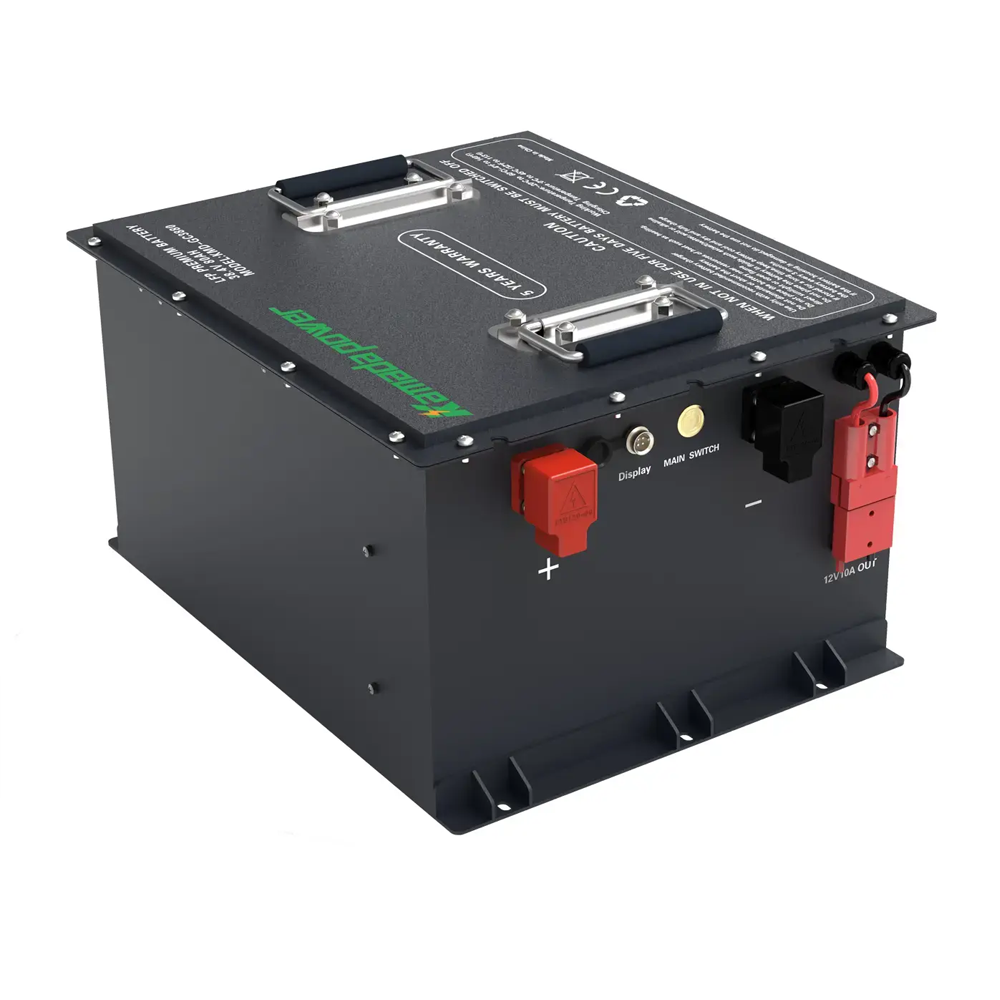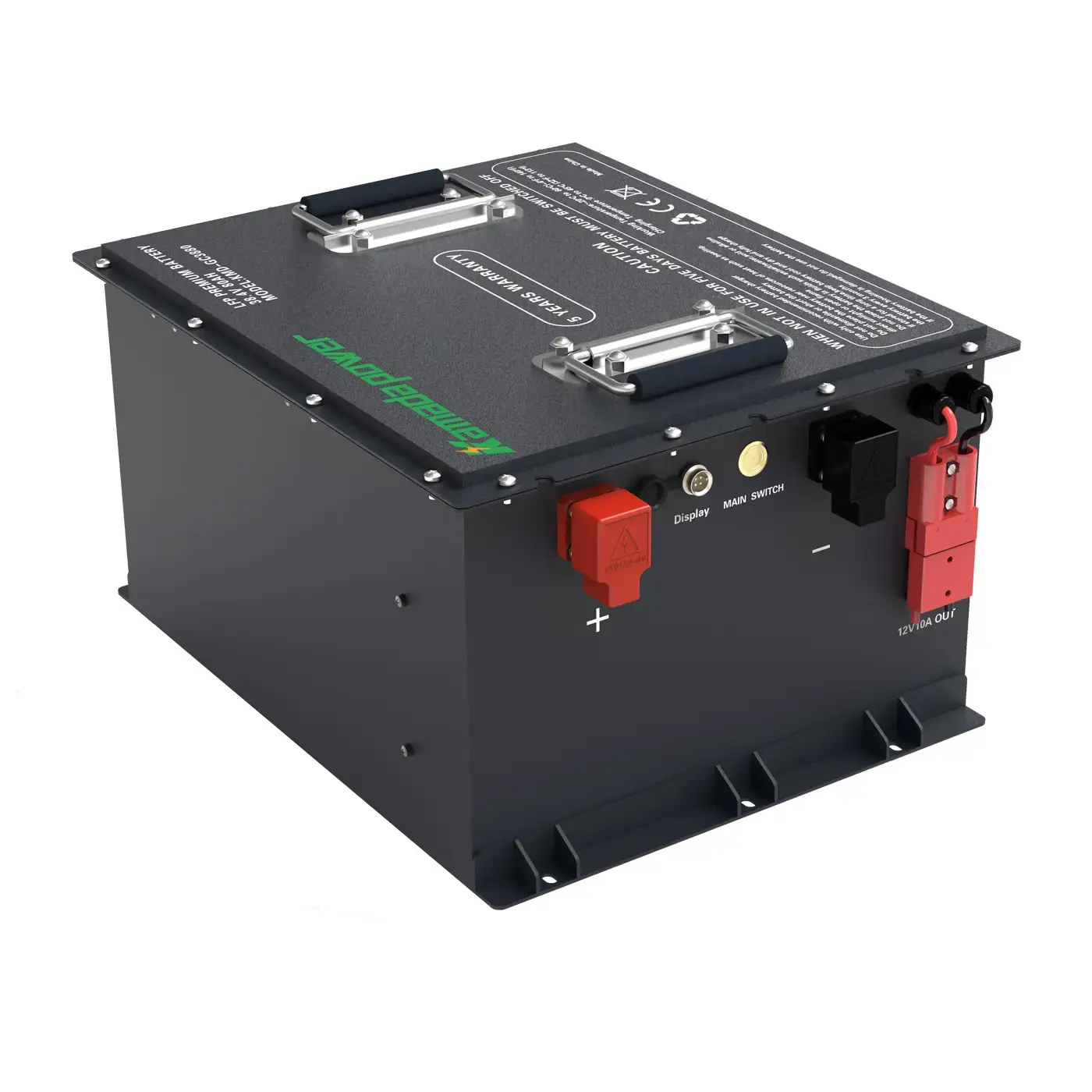Introduction
What Does Ah Mean on a Battery? Batteries play a crucial role in modern life, powering everything from smartphones to cars, from home UPS systems to drones. However, for many people, battery performance metrics may still be a mystery. One of the most common metrics is Ampere-hour (Ah), but what exactly does it represent? Why is it so important? In this article, we will delve into the meaning of battery Ah and how it’s calculated, while explaining the key factors that affect the reliability of these calculations. Additionally, we will explore how to compare different types of batteries based on Ah and provide readers with a comprehensive conclusion to help them better understand and choose the batteries that suit their needs.
What Does Ah Mean on a Battery

12V 100Ah LiFePO4 Battery Pack
Ampere-hour (Ah) is the unit of battery capacity used to measure the ability of a battery to provide current over a certain period of time. It tells us how much current a battery can deliver over a given duration.
Let’s illustrate with a vivid scenario: imagine you’re hiking and you need a portable power bank to keep your phone charged. Here, you’d need to consider the capacity of the power bank. If your power bank has a capacity of 10Ah, it means it can provide a current of 10 amperes for one hour. If your phone battery has a capacity of 3000 milliampere-hours (mAh), then your power bank can charge your phone approximately 300 milliampere-hours (mAh) because 1000 milliampere-hours (mAh) equals 1 ampere-hour (Ah).
Another example is a car battery. Suppose your car battery has a capacity of 50Ah. This means it can provide a current of 50 amperes for one hour. For a typical car startup, it might require around 1 to 2 amperes of current. Therefore, a 50Ah car battery is sufficient to start the car multiple times without depleting the battery’s energy storage.
In household UPS (Uninterruptible Power Supply) systems, Ampere-hour is also a critical indicator. If you have a UPS system with a capacity of 1500VA (Watts) and the battery voltage is 12V, then its battery capacity is 1500VA ÷ 12V = 125Ah. This means the UPS system theoretically can provide a current of 125 amperes, supplying backup power for household appliances for approximately 2 to 3 hours.
When purchasing batteries, understanding Ampere-hour is crucial. It can help you determine how long a battery can power your devices, thus meeting your needs. Therefore, when buying batteries, pay special attention to the Ampere-hour parameter to ensure the chosen battery can meet your usage requirements.
How to Calculate the Ah of a Battery
These calculations can be represented by the following formula: Ah = Wh / V
Where,
- Ah is Ampere-hour (Ah)
- Wh is Watt-hour (Wh), representing the energy of the battery
- V is Voltage (V), representing the battery’s voltage
- Smartphone:
- Battery Capacity (Wh): 15 Wh
- Battery Voltage (V): 3.7 V
- Calculation: 15 Wh ÷ 3.7 V = 4.05 Ah
- Explanation: This means the smartphone battery can provide a current of 4.05 amperes for one hour, or 2.02 amperes for two hours, and so on.
- Laptop:
- Battery Capacity (Wh): 60 Wh
- Battery Voltage (V): 12 V
- Calculation: 60 Wh ÷ 12 V = 5 Ah
- Explanation: This means the laptop battery can provide a current of 5 amperes for one hour, or 2.5 amperes for two hours, and so on.
- Car:
- Battery Capacity (Wh): 600 Wh
- Battery Voltage (V): 12 V
- Calculation: 600 Wh ÷ 12 V = 50 Ah
- Explanation: This means the car battery can provide a current of 50 amperes for one hour, or 25 amperes for two hours, and so on.
- Electric Bicycle:
- Battery Capacity (Wh): 360 Wh
- Battery Voltage (V): 36 V
- Calculation: 360 Wh ÷ 36 V = 10 Ah
- Explanation: This means the electric bicycle battery can provide a current of 10 amperes for one hour, or 5 amperes for two hours, and so on.
- Motorcycle:
- Battery Capacity (Wh): 720 Wh
- Battery Voltage (V): 12 V
- Calculation: 720 Wh ÷ 12 V = 60 Ah
- Explanation: This means the motorcycle battery can provide a current of 60 amperes for one hour, or 30 amperes for two hours, and so on.
- Drone:
- Battery Capacity (Wh): 90 Wh
- Battery Voltage (V): 14.8 V
- Calculation: 90 Wh ÷ 14.8 V = 6.08 Ah
- Explanation: This means the drone battery can provide a current of 6.08 amperes for one hour, or 3.04 amperes for two hours, and so on.
- Handheld Vacuum Cleaner:
- Battery Capacity (Wh): 50 Wh
- Battery Voltage (V): 22.2 V
- Calculation: 50 Wh ÷ 22.2 V = 2.25 Ah
- Explanation: This means the handheld vacuum cleaner battery can provide a current of 2.25 amperes for one hour, or 1.13 amperes for two hours, and so on.
- Wireless Speaker:
- Battery Capacity (Wh): 20 Wh
- Battery Voltage (V): 3.7 V
- Calculation: 20 Wh ÷ 3.7 V = 5.41 Ah
- Explanation: This means the wireless speaker battery can provide a current of 5.41 amperes for one hour, or 2.71 amperes for two hours, and so on.
- Handheld Game Console:
- Battery Capacity (Wh): 30 Wh
- Battery Voltage (V): 7.4 V
- Calculation: 30 Wh ÷ 7.4 V = 4.05 Ah
- Explanation: This means the handheld game console battery can provide a current of 4.05 amperes for one hour, or 2.03 amperes for two hours, and so on.
- Electric Scooter:
- Battery Capacity (Wh): 400 Wh
- Battery Voltage (V): 48 V
- Calculation: 400 Wh ÷ 48 V = 8.33 Ah
- Explanation: This means the electric scooter battery can provide a current of 8.33 amperes for one hour, or 4.16 amperes for two hours, and so on.
Key Factors Affecting the Reliability of Battery Ah Calculation
You should note that the calculation of “Ah” for batteries is not always accurate and reliable. There are some factors that affect the actual capacity and performance of batteries.
Several key factors affect the accuracy of Ampere-hour (Ah) calculation, here are a few of them, along with some calculation examples:
- Temperature: Temperature significantly affects battery capacity. Generally, as temperature increases, the capacity of the battery increases, and as temperature decreases, the capacity decreases. For example, a lead-acid battery with a nominal capacity of 100Ah at 25 degrees Celsius may have an actual capacity slightly higher
than 100Ah; however, if the temperature drops to 0 degrees Celsius, the actual capacity may decrease to 90Ah.
- Charge and discharge rate: The charge and discharge rate of the battery also affect its actual capacity. Generally, batteries charged or discharged at higher rates will have lower capacities. For example, a lithium battery with a nominal capacity of 50Ah discharged at 1C (the nominal capacity multiplied by the rate) may have an actual capacity of only 90% of the nominal capacity; but if charged or discharged at a rate of 0.5C, the actual capacity may be close to the nominal capacity.
- Battery health: As batteries age, their capacity may gradually decrease. For example, a new lithium battery may retain over 90% of its initial capacity after charge and discharge cycles, but over time and with increasing charge and discharge cycles, its capacity may decrease to 80% or even lower.
- Voltage drop and internal resistance: Voltage drop and internal resistance affect battery capacity. An increase in internal resistance or excessive voltage drop may reduce the actual capacity of the battery. For example, a lead-acid battery with a nominal capacity of 200Ah may have an actual capacity of only 80% of the nominal capacity if the internal resistance increases or the voltage drop is excessive.
Suppose there is a lead-acid battery with a nominal capacity of 100Ah, an ambient temperature of 25 degrees Celsius, a charge and discharge rate of 0.5C, and an internal resistance of 0.1 ohm.
- Considering temperature effect: At an ambient temperature of 25 degrees Celsius, the actual capacity may be slightly higher than the nominal capacity, let’s assume 105Ah.
- Considering charge and discharge rate effect: Charging or discharging at 0.5C rate may result in the actual capacity being close to the nominal capacity, let’s assume 100Ah.
- Considering battery health effect: Suppose after some usage time, the battery’s capacity decreases to 90Ah.
- Considering voltage drop and internal resistance effect: If the internal resistance increases to 0.2 ohms, the actual capacity may decrease to 80Ah.
These calculations can be expressed by the following formula: Ah = Wh / V
Where,
- Ah is Ampere-hour (Ah)
- Wh is Watt-hour (Wh), representing the energy of the battery
- V is Voltage (V), representing the battery’s voltage
Based on the given data, we can use this formula to calculate the actual capacity:
- For the temperature effect, we only need to consider that the actual capacity may be slightly higher than the nominal capacity at 25 degrees Celsius, but without specific data, we can’t make an accurate calculation.
- For the charge and discharge rate effect, if the nominal capacity is 100Ah and the watt-hour is 100Wh, then: Ah = 100Wh / 100V = 1Ah
- For the battery health effect, if the nominal capacity is 100Ah and the watt-hour is 90Wh, then: Ah = 90 Wh / 100 V = 0.9 Ah
- For the voltage drop and internal resistance effect, if the nominal capacity is 100Ah and the watt-hour is 80Wh, then: Ah = 80 Wh / 100 V = 0.8 Ah
In summary, these calculation examples help us understand the calculation of Ampere-hour and the influence of different factors on battery capacity.
Therefore, when calculating the “Ah” of a battery, you should consider these factors and use them as estimates rather than exact values.
To Compare Different Batteries Based on “Ah” 6 Key Points:
| Battery Type | Voltage (V) | Nominal Capacity (Ah) | Actual Capacity (Ah) | Cost-effectiveness | Application Requirements |
|---|---|---|---|---|---|
| Lithium-ion | 3.7 | 10 | 9.5 | High | Portable Devices |
| Lead-acid | 12 | 50 | 48 | Low | Automotive Starting |
| Nickel-cadmium | 1.2 | 1 | 0.9 | Medium | Handheld Devices |
| Nickel-metal hydride | 1.2 | 2 | 1.8 | Medium | Power Tools |
- Battery Type: Firstly, the battery types to be compared need to be the same. For instance, you can’t directly compare the Ah value of a lead-acid battery with that of a lithium battery because they have different chemical compositions and operating principles.
- Voltage: Ensure that the batteries being compared have the same voltage. If the batteries have different voltages, then even if their Ah values are the same, they may provide different amounts of energy.
- Nominal Capacity: Look at the battery’s nominal capacity (usually in Ah). Nominal capacity indicates the rated capacity of the battery under specific conditions, determined by standardized testing.
- Actual Capacity: Consider the actual capacity because a battery’s actual capacity may be influenced by various factors such as temperature, charge and discharge rate, battery health, etc.
- Cost-effectiveness: Besides the Ah value, also consider the cost of the battery. Sometimes, a battery with a higher Ah value may not be the most cost-effective choice because its cost may be higher, and the actual energy delivered may not be proportional to the cost.
- Application Requirements: Most importantly, choose batteries based on your application requirements. Different applications may require different types and capacities of batteries. For example, some applications may need high-capacity batteries to provide long-term power, while others may prioritize lightweight and compact batteries.
In conclusion, to compare batteries based on “Ah,” you need to consider the above factors comprehensively and apply them to your specific needs and scenarios.
Conclusion
The Ah value of a battery is an important indicator of its capacity, affecting its usage time and performance. By understanding the meaning of battery Ah and considering the factors that affect the reliability of its calculation, people can more accurately assess battery performance. Furthermore, when comparing different types of batteries, it’s essential to consider factors such as battery type, voltage, nominal capacity, actual capacity, cost-effectiveness, and application requirements. By gaining a deeper understanding of battery Ah, people can make better choices for batteries that meet their needs, thus enhancing the efficiency and convenience of battery usage.
What Does Ah Mean on A Battery Frequently Asked Questions (FAQ)
1. What is battery Ah?
Ah stands for Ampere-hour, which is the unit of battery capacity used to measure the battery’s ability to supply current over a certain period of time. Simply put, it tells us how much current a battery can provide for how long.
2. Why is battery Ah important?
The Ah value of a battery directly affects its usage time and performance. Understanding the battery’s Ah value can help us determine how long the battery can power a device, thus meeting specific needs.
3. How do you calculate battery Ah?
Battery Ah can be calculated by dividing the battery’s Watt-hour (Wh) by its voltage (V), i.e., Ah = Wh / V. This gives the amount of current the battery can supply in one hour.
4. What factors affect the reliability of battery Ah calculation?
Several factors affect the reliability of battery Ah calculation, including temperature, charging and discharging rates, battery health condition, voltage drop, and internal resistance. These factors may cause differences between actual and theoretical capacities.
5. How do you compare different types of batteries based on Ah?
To compare different types of batteries, you need to consider factors such as battery type, voltage, nominal capacity, actual capacity, cost-effectiveness, and application requirements. Only after considering these factors can you make the right choice.
6. How should I choose a battery that suits my needs?
Choosing a battery that suits your needs depends on your specific usage scenario. For example, some applications may require high-capacity batteries to provide long-lasting power, while others may prioritize lightweight and compact batteries. Therefore, it’s crucial to choose a battery based on your application requirements.
7. What is the difference between actual capacity and nominal capacity of a battery?
Nominal capacity refers to the rated capacity of a battery under specific conditions, determined by standard testing. Actual capacity, on the other hand, refers to the amount of current a battery can provide in real-world usage, influenced by various factors and may have slight deviations.
8. How does the charging and discharging rate affect battery capacity?
The higher the charging and discharging rate of a battery, the lower its capacity may be. Therefore, when choosing a battery, it’s essential to consider the actual charging and discharging rates to ensure they meet your requirements.
9. How does temperature affect battery capacity?
Temperature significantly affects battery capacity. Generally, as temperature rises, battery capacity increases, while it decreases as temperature drops.
10. How can I ensure that my battery meets my needs?
To ensure that a battery meets your needs, you need to consider factors such as battery type, voltage, nominal capacity, actual capacity, cost-effectiveness, and application requirements. Based on these factors, make a choice that aligns with your specific situation.








